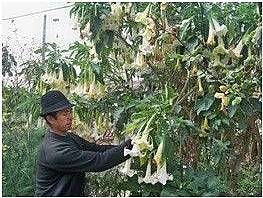- Ecuador


Traditional Healing Practice of the Saraguro in Ecuador

© Armijos et al.; licensee BioMed Central Ltd. 2014
1. ICH domains
Oral traditions and expressions, social practices, knowledge and practices concerning nature and the universe
2. Short description
The Saraguro indigenous community in Ecuador includes approximately 60,000 individuals. Their traditional health system is a cultural expression that represents the community's ability to safeguard and keep their ancestral knowledge and technology, culture, medicine, language and customs alive.
Throughout their history, the Saraguro people have accumulated expertise regarding a wide variety of medicinal plants. This knowledge is preserved by yachakkuna (wise men or women familiar with the healing power of plants), responsible for diagnosing, treating and curing physical illnesses, and other disorders that are perceived as having supernatural characteristics, or being caused by spirits or non-physiological reasons.
The Loja Provincial Health Department and the Saraguro Healers Council work together in accordance with public health policy. As stated in the Manual of the Comprehensive Health Care Model, ‘Intercultural […] corresponds to a design of mechanisms that enable coordination between public health systems and those of diverse, ancestral, traditional and alternative populations, all aiming to guarantee the care of users with due respect for their human rights’. In addition, a traditional indigenous medicine school has been established, where yachakkuna share their knowledge and choose young apprentices. The school’s main goal is to transmit the traditional healing knowledge of the Saraguro indigenous community. Some bilingual intercultural schools practice with their students some inherited healing rituals, for example: in the religious ceremony ‘Inti Raymi’ there are healing baths with hot water and cold water at five o'clock in the morning where students, parents and teachers participate in this ritual of healing and energizing.
Further information:
For further information on the traditional medicine of Saraguro yachakkuna, the Saraguro Healers Council and organic plant production, see:
https://ethnobiomed.biomedcentral.com/articles/10.1186/1746-4269-10-26
https://www.youtube.com/watch?v=0FkPb8eBM5A (Spanish)
3. Link with sustainable development
The Loja Provincial Department of Health, where the Saraguro community is located, recognizes the importance of this system of traditional medicine. Such recognition and joint collaboration allows and strengthens basic health coverage for the population, echoing SDG 3 on ensuring healthy lives and promoting well-being for all at all ages. Moreover, the growth of medicinal plants is associated with the production of organic seeds and vegetables and other organic foods that make up the rich traditional cuisine of the inhabitants, reflecting SDG 15 on sustainably managing forests and halting biodiversity loss.
4. Questions for reflection
Pressure to use modern medicine and allopathic remedies also poses a risk to the maintenance of the Saraguro traditional medicine system. However, what are the factors that explain why this experience is a positive example of integrating the safeguarding of ICH in development policies and what made it work? To what extent can traditional medical systems and practices coexist with modern medicine and institutionalized health protocols?